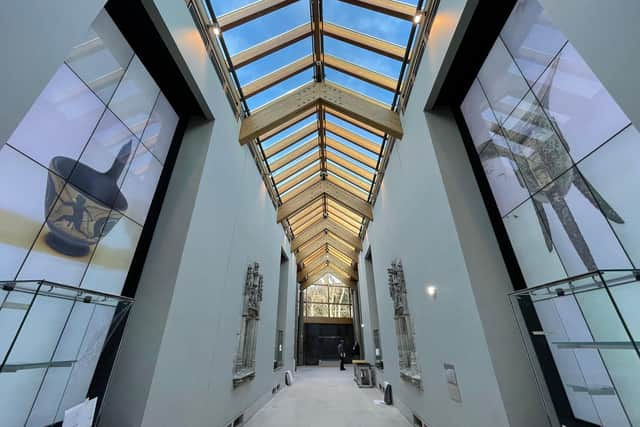Burrell Collection: Glasgow reveals £68m new look for home of 9000 art treasures gifted by shipping magnate
Now the vast legacy of the shipping magnate and philanthropist Sir William Burrell, who collected works of art from all over the world, is set for a new lease of life after one of the biggest cultural projects in modern times in Scotland.
Glasgow City Council, which describes The Burrell Collection museum as “one of Scotland’s finest examples of post-war architecture,” revealed its new look as it announced a public reopening on 29 March.
Advertisement
Hide AdAdvertisement
Hide AdThe £68.25 million transformation of the A-listed attraction in Pollok Country Park, in the city’s south side has safeguarded the future of the art treasures Sir William collected across more than 75 years and ensured more of the work can be seen than ever before.
Gallery space has been increased by more than a third under a six-year project, which will allow some of the 9000 works to be displayed for the first time in decades or, in some cases, ever.`
The centrepiece of the project – the biggest museum refurbishment in Britain in recent years - is a new staircase which will allow visitors to explore all three floors of the building for the first time.
The building will have a new main entrance and cafe, while store rooms will also be opened up to the public for the first time to widen access to the collection, donated by Sir William in 1944 and added to until his death in 1958.
Sir William, who insisted the collection be displayed in a rural setting, had eclectic tastes, acquiring paintings drawn from five centuries and other works of art spanning five millennia.
Highlights include one of the most significant collections of Chinese pottery and porcelain in Europe, one of the most important collections of tapestries and stained glass in the world, one of the three earliest surviving Persian garden carpets in the world.
The collection, which also features, Islamic art treasures, European arms and armour dating from the 13th to the 17th centuries, including weapons carried by the personal guards of princes and monarchs, and work by the French artists Manet, Cézanne and Degas.
Advertisement
Hide AdAdvertisement
Hide AdThe transformation of the museum, which opened in 1983, is said to have turned it into “an exemplar of sustainable low carbon design,” thanks to improved power, heating and lighting systems, and a new roof and glazing.
Bridget McConnell, chief executive of Glasgow Life, which runs the museum, said: “When the Burrell first opened it was the first real self-conscious statement from Glasgow that it was a world city of cullture.


"A lot of people scoffed at that point, but it was a landmark moment for this city and we all know what happened after that – the Glasgow Garden Festival, the city becoming a European City of Culture and a UK City of Architecture of Design – the list goes on.
"But during that period we discovered that there were fundamental issues with the roof which, in a very wet Glasgow, just could not be resolved. The environmental controls and technology we have now just weren’t available when it was built.
"The physical fabric of the building became an increasingly problem, which resulted in visitor numbers declining. There was a real sense from very early on in my time, which was from 1998, that it really needed attention.
"I think that we’ve ended up with an even more magnificent building than it was before.
